Showing Spotlights 1849 - 1856 of 2783 in category All (newest first):
 There are great expectations for the future of nanomaterials science and worldwide attention has been drawn to the enormous potential of nanoscience and nanotechnology. Although Europe's expertise in nanomaterials science is excellent, it is highly fragmented into scientific disciplines, sectors and national efforts which are on a global level often subcritical. Europe would considerably benefit from a strategic pan-European, multidisciplinary research involving all sectors and the most advanced European research infrastructures. This is the great theme of GENNESYS, a foresight project to roadmap the future research needs and to pinpoint the various scientific challenges and technological limitations in the various areas in nanomaterials research.
There are great expectations for the future of nanomaterials science and worldwide attention has been drawn to the enormous potential of nanoscience and nanotechnology. Although Europe's expertise in nanomaterials science is excellent, it is highly fragmented into scientific disciplines, sectors and national efforts which are on a global level often subcritical. Europe would considerably benefit from a strategic pan-European, multidisciplinary research involving all sectors and the most advanced European research infrastructures. This is the great theme of GENNESYS, a foresight project to roadmap the future research needs and to pinpoint the various scientific challenges and technological limitations in the various areas in nanomaterials research.
Apr 22nd, 2010
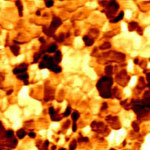 Most of the material properties investigated by atomic force microscopy are acquired by processing the deflection signal of the cantilever, which is applied to Electrostatic Force Microscopy (EFM) measurements as well. For EFM, the sample surface properties would be electrical properties and the interaction force will be the electrostatic force between the biased tip and the sample. Electrostatic Force Microscopy maps electric properties on a sample surface by measuring the electrostatic force between the surface and a biased AFM cantilever. EFM applies a voltage between the tip and the sample while the cantilever hovers above the surface, not touching it. The cantilever deflects when it scans over static charges.
Most of the material properties investigated by atomic force microscopy are acquired by processing the deflection signal of the cantilever, which is applied to Electrostatic Force Microscopy (EFM) measurements as well. For EFM, the sample surface properties would be electrical properties and the interaction force will be the electrostatic force between the biased tip and the sample. Electrostatic Force Microscopy maps electric properties on a sample surface by measuring the electrostatic force between the surface and a biased AFM cantilever. EFM applies a voltage between the tip and the sample while the cantilever hovers above the surface, not touching it. The cantilever deflects when it scans over static charges.
Apr 21st, 2010
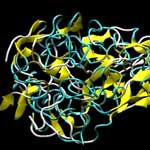 Material scientists have been fascinated by spider silks for a long time - ultra-strong and extensible self-assembling biopolymers that outperform the mechanical characteristics of many synthetic materials, including steel. While the source of these unique material properties are thought to lie in the distinct protein structures found in spider silk, the physical mechanisms behind them have remained poorly understood for decades. This is partly due to the fact that structural models of spider silk with atomic-level resolution have not been available, preventing a molecular-level analysis. So far, only small models of isolated crystalline domains of silk have been reported. Yet, the integrated structure of the semi-amorphous regions combined with crystalline domains in silk is critical for properties such as toughness and fracture mechanisms. To unravel silk's secrets and ultimately be able to create synthetic materials that duplicate, or even exceed, the extraordinary properties of natural silk, researchers need to fully understand the links between genetic makeup, chemical interactions, and structure, as well as its macroscale mechanical properties.
Material scientists have been fascinated by spider silks for a long time - ultra-strong and extensible self-assembling biopolymers that outperform the mechanical characteristics of many synthetic materials, including steel. While the source of these unique material properties are thought to lie in the distinct protein structures found in spider silk, the physical mechanisms behind them have remained poorly understood for decades. This is partly due to the fact that structural models of spider silk with atomic-level resolution have not been available, preventing a molecular-level analysis. So far, only small models of isolated crystalline domains of silk have been reported. Yet, the integrated structure of the semi-amorphous regions combined with crystalline domains in silk is critical for properties such as toughness and fracture mechanisms. To unravel silk's secrets and ultimately be able to create synthetic materials that duplicate, or even exceed, the extraordinary properties of natural silk, researchers need to fully understand the links between genetic makeup, chemical interactions, and structure, as well as its macroscale mechanical properties.
Apr 20th, 2010
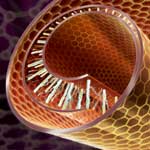 As it is becoming clearer that one of the critical issues for developing functional nanomachines is the generation of energy required to power them, research into developing nanoscale energy sources has been picking up substantially. The energy to be fed into a nanogenerator is likely to be mechanical energy that is converted into electric energy that then will be used to power nanodevices without using a battery. With the emergence of nanotechnology and the use of nanomaterials, the field of piezoelectrics and nanopiezotronics has experienced a lot of new and interesting research efforts. Researchers in Korea have now demonstrated the first use of chemical vapor deposition-grown large-scale graphene sheets as transparent electrodes for fully transparent and flexible nanogenerators.
As it is becoming clearer that one of the critical issues for developing functional nanomachines is the generation of energy required to power them, research into developing nanoscale energy sources has been picking up substantially. The energy to be fed into a nanogenerator is likely to be mechanical energy that is converted into electric energy that then will be used to power nanodevices without using a battery. With the emergence of nanotechnology and the use of nanomaterials, the field of piezoelectrics and nanopiezotronics has experienced a lot of new and interesting research efforts. Researchers in Korea have now demonstrated the first use of chemical vapor deposition-grown large-scale graphene sheets as transparent electrodes for fully transparent and flexible nanogenerators.
Apr 19th, 2010
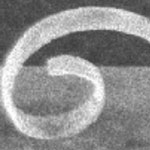 Controllable fabrication of complex, three-dimensional (3D) nanoscale structures remains a difficult challenge. Researchers are experimenting with a wide range of nanofabrication techniques, from top-down approaches such as mechanical machining to biomimetic replication of complex biotemplates to bottom-up fabrication using anisotropic self-assembly systems - to just name a few examples. New work at Johns Hopkins University utilizes the extrinsic stresses that develop during thin-film deposition - but can also be induced by external forces post-deposition - for the self-assembly of 3D curved and simultaneously patterned structures. This technique is fairly simple and low-cost since it requires only thermal evaporation and low temperature processing; the stress for self-assembly can be controlled to occur only when required. Furthermore, the layers that are selected for 3D structuring can also easily be patterned with conventional electron-beam lithographic processing.
Controllable fabrication of complex, three-dimensional (3D) nanoscale structures remains a difficult challenge. Researchers are experimenting with a wide range of nanofabrication techniques, from top-down approaches such as mechanical machining to biomimetic replication of complex biotemplates to bottom-up fabrication using anisotropic self-assembly systems - to just name a few examples. New work at Johns Hopkins University utilizes the extrinsic stresses that develop during thin-film deposition - but can also be induced by external forces post-deposition - for the self-assembly of 3D curved and simultaneously patterned structures. This technique is fairly simple and low-cost since it requires only thermal evaporation and low temperature processing; the stress for self-assembly can be controlled to occur only when required. Furthermore, the layers that are selected for 3D structuring can also easily be patterned with conventional electron-beam lithographic processing.
Apr 16th, 2010
 Graphene is being explored, among many other uses, as a replacement material for silicon in photonic devices to expand the wavelength range of operation and to improve performance. Another area where graphene potentially could replace silicon and could have a huge impact is as light-absorbing material in solar cells. Although it has been well known that graphene has very attractive properties for photovoltaic applications - tunable bandgap and large optical absorptivity - these advantages could not be exploited so far due to the problem of fabricating solution-processable, stable, and large enough, size-controllable graphene structures useful for charge collection in solar cells. Graphene quantum dots might offer a solution to these fabrication problems.
Graphene is being explored, among many other uses, as a replacement material for silicon in photonic devices to expand the wavelength range of operation and to improve performance. Another area where graphene potentially could replace silicon and could have a huge impact is as light-absorbing material in solar cells. Although it has been well known that graphene has very attractive properties for photovoltaic applications - tunable bandgap and large optical absorptivity - these advantages could not be exploited so far due to the problem of fabricating solution-processable, stable, and large enough, size-controllable graphene structures useful for charge collection in solar cells. Graphene quantum dots might offer a solution to these fabrication problems.
Apr 14th, 2010
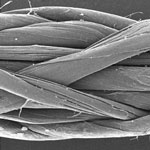 Few technologies on the near-term horizon offer as much potential for game-changing results as do carbon nanotube products. But in an age where the state-of-the-art in global defense, transportation and energy depend on meaningful advancement and delivery of novel materials, it is critical to view scalability to be as important as product performance itself. To date, few nanotechnology manufacturers have solved this scaling problem - choosing instead to focus most of their resources on research and advances in material science. Materials without a meaningful path to volume delivery will remain just that; novel inventions with very little practical value. Instead, addressing the issue of scaled production is the central challenge for today's nanotechnology firms.
Few technologies on the near-term horizon offer as much potential for game-changing results as do carbon nanotube products. But in an age where the state-of-the-art in global defense, transportation and energy depend on meaningful advancement and delivery of novel materials, it is critical to view scalability to be as important as product performance itself. To date, few nanotechnology manufacturers have solved this scaling problem - choosing instead to focus most of their resources on research and advances in material science. Materials without a meaningful path to volume delivery will remain just that; novel inventions with very little practical value. Instead, addressing the issue of scaled production is the central challenge for today's nanotechnology firms.
Apr 12th, 2010
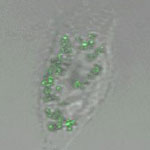 Silver nanoparticles can now be found in all kinds of products, from socks to food containers to coatings for medical devices. Valued for its infection-fighting, antimicrobial properties, silver, in its modern incarnation as silver nanoparticles, has become the promising antimicrobial material in a variety of applications because the nanoparticles can damage bacterial cells. Due to their plasmonic properties and easy surface chemistry silver nanoparticles are also beginning to attract interest among nanomedicine researchers. However, the surface chemistry of nanoparticles that governs their interactions with other constituents in their environment has critical importance. Therefore, chemically altering the surface properties of nanoparticles with polymers, biological ligands and macromolecules is actively being explored.
Silver nanoparticles can now be found in all kinds of products, from socks to food containers to coatings for medical devices. Valued for its infection-fighting, antimicrobial properties, silver, in its modern incarnation as silver nanoparticles, has become the promising antimicrobial material in a variety of applications because the nanoparticles can damage bacterial cells. Due to their plasmonic properties and easy surface chemistry silver nanoparticles are also beginning to attract interest among nanomedicine researchers. However, the surface chemistry of nanoparticles that governs their interactions with other constituents in their environment has critical importance. Therefore, chemically altering the surface properties of nanoparticles with polymers, biological ligands and macromolecules is actively being explored.
Apr 9th, 2010
 There are great expectations for the future of nanomaterials science and worldwide attention has been drawn to the enormous potential of nanoscience and nanotechnology. Although Europe's expertise in nanomaterials science is excellent, it is highly fragmented into scientific disciplines, sectors and national efforts which are on a global level often subcritical. Europe would considerably benefit from a strategic pan-European, multidisciplinary research involving all sectors and the most advanced European research infrastructures. This is the great theme of GENNESYS, a foresight project to roadmap the future research needs and to pinpoint the various scientific challenges and technological limitations in the various areas in nanomaterials research.
There are great expectations for the future of nanomaterials science and worldwide attention has been drawn to the enormous potential of nanoscience and nanotechnology. Although Europe's expertise in nanomaterials science is excellent, it is highly fragmented into scientific disciplines, sectors and national efforts which are on a global level often subcritical. Europe would considerably benefit from a strategic pan-European, multidisciplinary research involving all sectors and the most advanced European research infrastructures. This is the great theme of GENNESYS, a foresight project to roadmap the future research needs and to pinpoint the various scientific challenges and technological limitations in the various areas in nanomaterials research. 
 Subscribe to our Nanotechnology Spotlight feed
Subscribe to our Nanotechnology Spotlight feed





